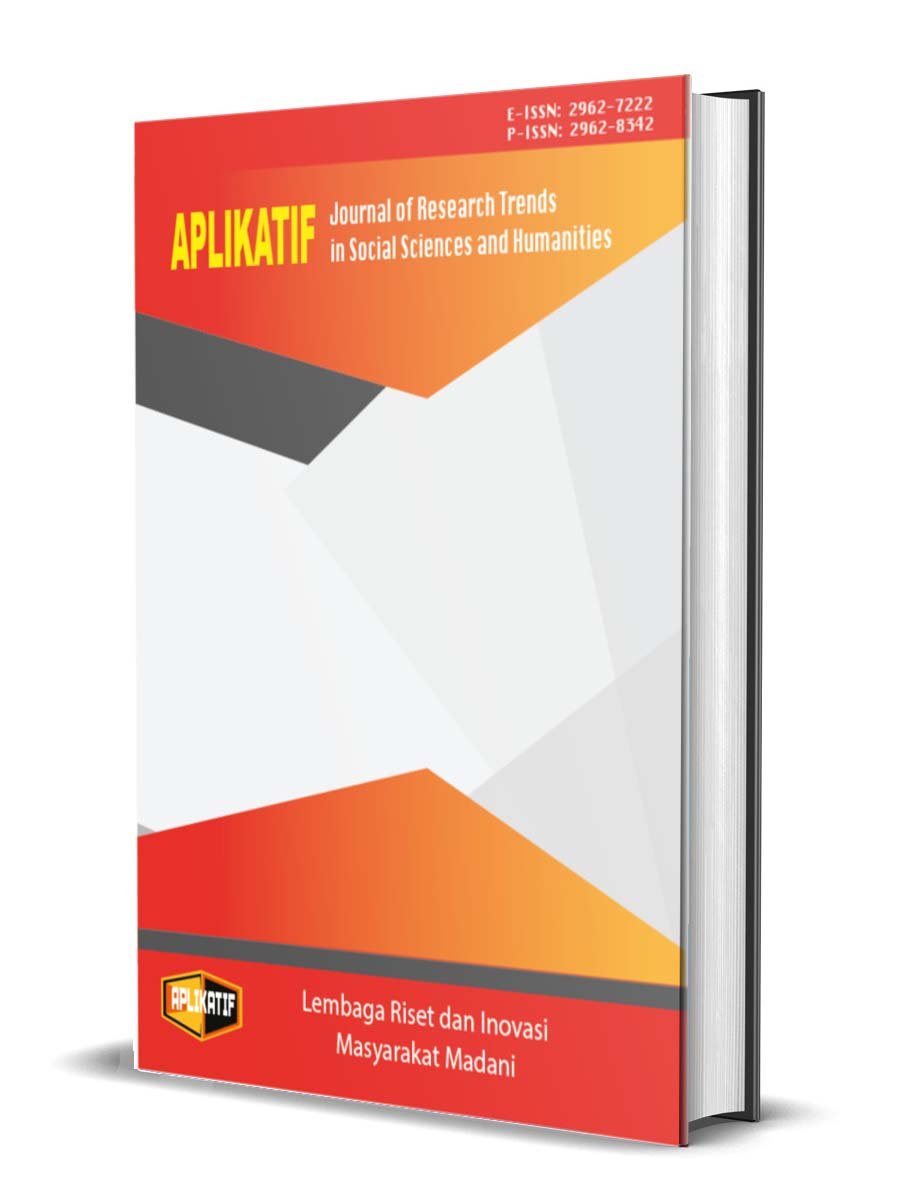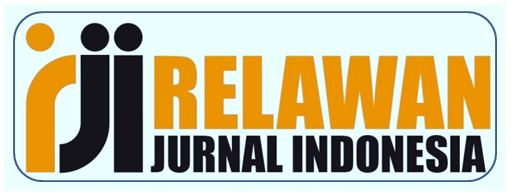Strengthening Physics Scientific Literacy in the Millennial Generation through the Blended Learning Model
https://doi.org/10.59110/aplikatif.v4i2.662
Keywords:
Blended Learning, Conventional Learning, Millennial Students, Physics Education, Scientific LiteracyAbstract
This study aims to analyze the improvement of scientific literacy in millennial students during physics learning through the implementation of the blended learning model. A quasi-experimental design with a nonequivalent control group was used. The experimental class applied the blended learning model, while the control class used conventional learning methods. Data were collected through scientific literacy tests administered as pretests and posttests, which were then analyzed using descriptive statistics and t-tests to examine the significance of differences between the two groups. The results indicate a significant difference in posttest scientific literacy scores between the experimental and control classes. The average posttest score in the experimental class was higher than that of the control class, suggesting that the blended learning model was more effective in enhancing students' scientific literacy. The t-test yielded a t-count of 2.053, which was greater than the t-table value of 1.996, with a significance level of 0.05. Based on these findings, it can be concluded that the blended learning model is more effective in improving the scientific literacy of millennial students, particularly in physics education. Future research could explore further optimization of blended learning implementation to enhance various aspects of scientific literacy.
Downloads
References
Akıllı, M., & Kutur, K. (2023). Does science literacy affect self-efficacy in science teaching? An analysis with structural equation modelling. Revista Romaneasca Pentru Educatie Multidimensionala, 15(2), 487-502. https://doi.org/10.18662/rrem/15.2/745
Al-Benna, S., Al-Ajam, Y., Way, B., & Steinstraesser, L. (2010). Descriptive and inferential statistical methods used in burns research. Burns, 36(3), 343-346. https://doi.org/10.1016/j.burns.2009.04.030
Arlim, M., Afrizon, R., Hufri, H., Dewi, W. S., & Sundari, P. D. (2023). Need analysis of interactive multimedia based on scientific literacy in physics learning. Physics Learning and Education, 1(2), 91-99. https://doi.org/10.24036/ple.v1i2.36
Aswirna, P., Kiswanda, V., Nurhasnah, N., & Fahmi, R. (2022). Implementation of STEM e-module with SDGs principle to improve science literacy and environment-friendly attitudes in terms of gender. JTK (Jurnal Tadris Kimiya), 7(1), 64-77. https://doi.org/10.15575/jtk.v7i1.16599
Aurini, J., & Davies, S. (2021). COVID‐19 school closures and educational achievement gaps in Canada: Lessons from Ontario summer learning research. Canadian Review of Sociology/Revue canadienne de sociologie, 58(2), 165-185. https://doi.org/10.1111/cars.12334
Basri, H. (2024). The effectiveness of blended learning, digital literacy programs, and teacher training on student outcomes in 2024. Global International Journal of Innovative Research, 2(8), 1745–1752. https://doi.org/10.59613/global.v2i8.249
Boma, M., Mahmudah, R. S. N. A., Salam, S., Pratiwi, I., Syahrir, S., Chen, D., ... & Ariatami, R. N. (2024). Improving science literacy skills through interactive physics e-learning for students at Lapandewa High School. Jurnal Penelitian & Pengembangan Pendidikan Fisika, 10(1), 79-86. https://doi.org/10.21009/1.10107
Cahyani, C. P. N., & Setiawan, E. P. (2024). How motivation mediated science achievement of Indonesian students: A path analysis on PISA 2018 data. Jurnal Penelitian Pendidikan IPA, 10(12), 10493-10501. https://doi.org/10.29303/jppipa.v10i12.10012
Chama, D., Ramchurn, S., & Mulaji, S. (2021). M-learning in higher education: Technology ownership and common attributes among millennials in South Africa. M-Learning, ICEDUTECH2021, 202102L001. https://doi.org/10.33965/ml_icedutech2021_202102l001
Di Pietro, G. (2023). The impact of Covid-19 on student achievement: Evidence from a recent meta-analysis. Educational Research Review, 39, 100530. https://doi.org/10.1016/j.edurev.2023.100530
Harris, R. (2016). Descriptive and inferential statistics. In Descriptive and Inferential Statistics (pp. 75-95). SAGE Publications Ltd. https://doi.org/10.4135/9781473920446.n5
Hui, E. G. M. (2019). Inferential statistics and regressions. In Learn R for Applied Statistics. Apress, Berkeley, CA. https://doi.org/10.1007/978-1-4842-4200-1_6
Kade, A., Syarif, M., & Syukur, S. A. (2019). Pengaruh model blended learning terhadap literasi sains dan hasil belajar. JPFT (Jurnal Pendidikan Fisika Tadulako Online, 7(3), 5155. http://jurnal.untad.ac.id/jurnal/index.php/EPFT/article/view/14586
Kuhfeld, M., Soland, J., Tarasawa, B., Johnson, A., Ruzek, E., & Liu, J. (2020). Projecting the potential impact of COVID-19 school closures on academic achievement. Educational Researcher, 49(8), 549-565. https://doi.org/10.3102/0013189X20965918
Lestari, H. (2020). Literasi sains siswa melalui penerapan model pembelajaran blended learning dengan blog. NATURALISTIC: Jurnal Kajian Penelitian Pendidikan Dan Pembelajaran, 4(2b), 597–604. https://doi.org/10.35568/naturalistic.v4i2b.769
Melinda, V., Hariyono, E., Erman, E., & Prahani, B. K. (2021, November). Profile of students’ scientific literacy in physics learning during the COVID-19 pandemic. In Journal of Physics: Conference Series, 2110(1), 012031. IOP Publishing. https://doi.org/10.1088/1742-6596/2110/1/012031
OECD. (2023). PISA 2022 results (Volume I): The state of learning and equity in education. PISA, OECD Publishing, Paris. https://doi.org/10.1787/53f23881-en
Peraturan Menteri Pendidikan, Kebudayaan, Riset, dan Teknologi Republik Indonesia Nomor 16 Tahun 2022 Tentang Standar Proses Pada Pendidikan Anak Usia Dini, Jenjang Pendidikan Dasar, dan Jenjang Pendidikan Menengah. https://guru.kemdikbud.go.id/dokumen/WZ20mLN9Ad?parentCategory=Implementasi%20Kurikulum%20Nasional
Putri, N. H. D., & Ramli. (2023). Development of STEM-based physics e-LKS to improve students' scientific literacy abilities. Jurnal Penelitian Pembelajaran Fisika, 9(2), 202-209. https://doi.org/10.24036/jppf.v9i2.123690
Rusdinal, R., & Afriansyah, H. (2023). A look at IR 4.0 in education. EAI. 12-11-2022.2327378. https://doi.org/10.4108/eai.12-11-2022.2327378
Sartika, D., Nurlina, Mutmainna, Aris, N. A., & Musliana. (2023). The scientific literacy profile of senior high school students based on science competence dimension. In The 1st International Conference on Science Education and Sciences, 2619(1), 100013. AIP Publishing LLC. https://doi.org/10.1063/5.0122563
Sekiyama, T. (2020). The impact of the fourth industrial revolution on student mobility from the perspective of education economics. Creative Education, 11(04), 435-446. https://doi.org/10.4236/ce.2020.114031
Şentürk, C. (2020). Effects of the blended learning model on preservice teachers’ academic achievements and twenty-first century skills. Education and Information Technologies, 26(1), 35-48. https://doi.org/10.1007/s10639-020-10340-y
Sharon, A., & Baram‐Tsabari, A. (2020). Can science literacy help individuals identify misinformation in everyday life? Science Education, 104(5), 873-894. https://doi.org/10.1002/sce.21581
Soroya, S., & Ameen, K. (2020). Millennials’ reading behavior in the digital age: A case study of Pakistani university students. Journal of Library Administration, 60, 559 - 577. https://doi.org/10.1080/01930826.2020.1760563
Sugiyono. (2019). Metode Penelitian Kuantitatif. Bandung: Alfabeta.
Sukarno, S., & El Widdah, M. (2020). The effect of students’ metacognition and digital literacy in virtual lectures during the COVID-19 pandemic on achievement in the “methods and strategies on physics learning” course. Jurnal Pendidikan IPA Indonesia, 9(4), 477-488. https://doi.org/10.15294/jpii.v9i4.25332
Sutrisna, N., & Anhar, A. (2020, August). An analysis of student’s scientific literacy skills of senior high school in Sungai Penuh City based on scientific competence and level of science literacy questions. In International Conference on Biology, Sciences and Education (ICoBioSE 2019) (pp. 149-156). Atlantis Press. https://doi.org/10.2991/absr.k.200807.032
Uğraş, M., Zengin, E., Papadakis, S., & Kalogiannakis, M. (2023). Early childhood learning losses during COVID-19: Systematic review. Sustainability, 15(7), 6199. https://doi.org/10.3390/su15076199
Yu, Z. (2022). Sustaining student roles, digital literacy, learning achievements, and motivation in online learning environments during the COVID-19 pandemic. Sustainability, 14(8), 4388. https://doi.org/10.3390/su14084388
Yuningsih, W., Permanasari, A., & Permana, I. (2022). Multimedia development of science learning based on science literacy on the theme of lightning. Journal of Science Education and Practice, 4(2), 69-84. https://doi.org/10.33751/jsep.v3i2.1722
Downloads
Published
How to Cite
Issue
Section
License
Copyright (c) 2025 Nurul Amalia Aris, Nurhandayani Nurhandayani, Nurvadillah Angraini, Sitti Rahmayani, Mawardi Jalil Masri

This work is licensed under a Creative Commons Attribution-ShareAlike 4.0 International License.
















